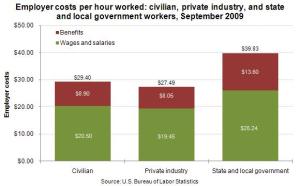 Compensation budget is an organization’s financial commitment towards compensation awards for its workforce. It’s a lifeline for compensation management process. A performance linked compensation budget for your managers to work upon will help you to retain your best as top talent always have more options and you may always run into a risk of losing talented workforce to your competitors.
Compensation budget is an organization’s financial commitment towards compensation awards for its workforce. It’s a lifeline for compensation management process. A performance linked compensation budget for your managers to work upon will help you to retain your best as top talent always have more options and you may always run into a risk of losing talented workforce to your competitors.
If your compensation allocation objective is to attract, retain and motivate best talent than performance linked budgeting is the key. Adoption of merit linked budget over the fixed budget will provide that required extra room for distributing compensation to your best talent, to achieve your organizational goals.
Be it a fixed number or a number based on some prorated value (such as on base salary), a manager with more talented people should have more budget in his disposal to allocate workforce appropriately. Use of organization or division wide performance linked budgeting guidelines will ensure consistency as allowing discretion beyond a point may result in derailment from original purpose. To enforce consistency, variation beyond an accepted threshold should not be permitted.
Choosing performance linked budgeting over the fixed budgeting gives an extra boost to your pay for performance system.





